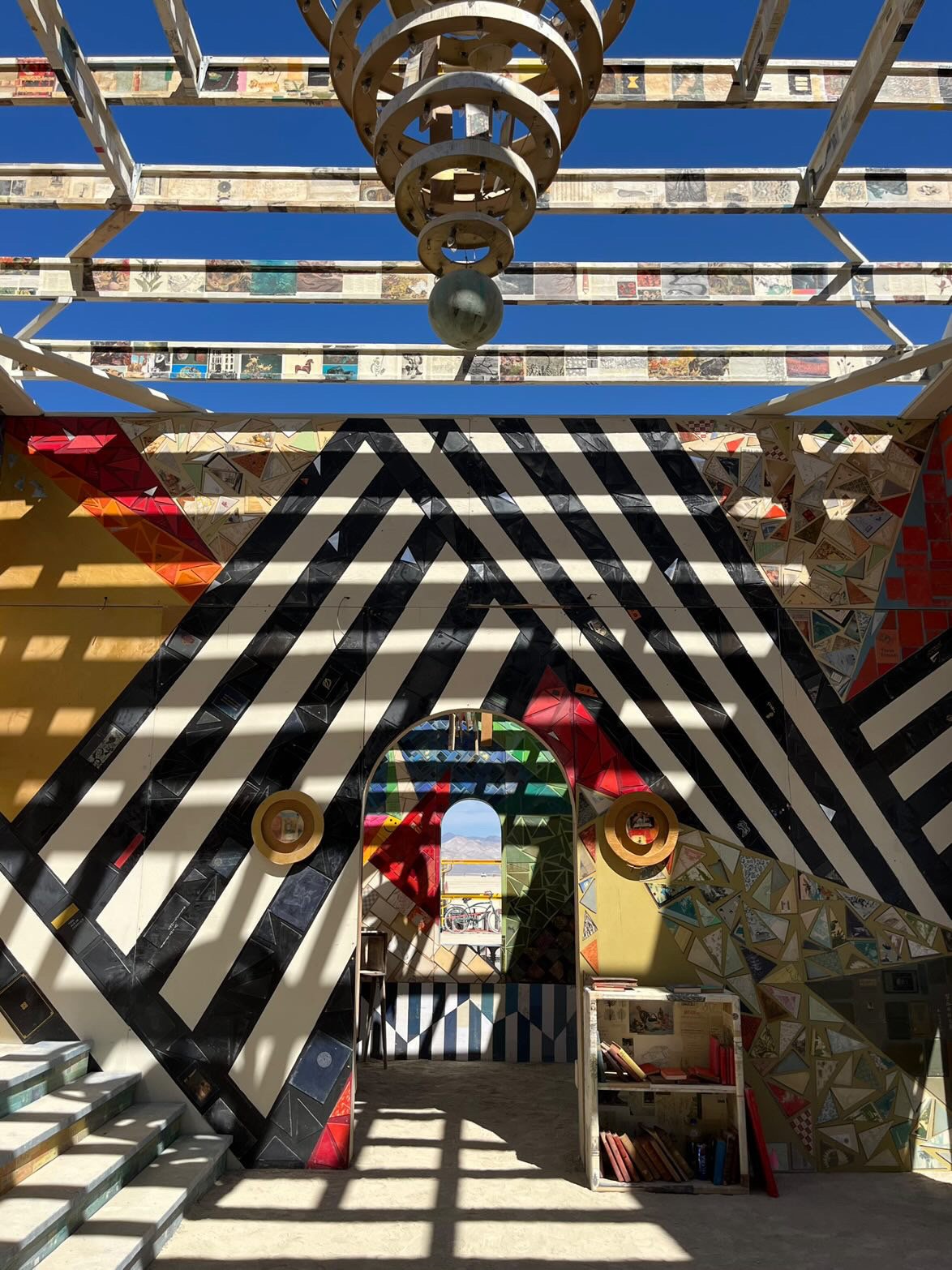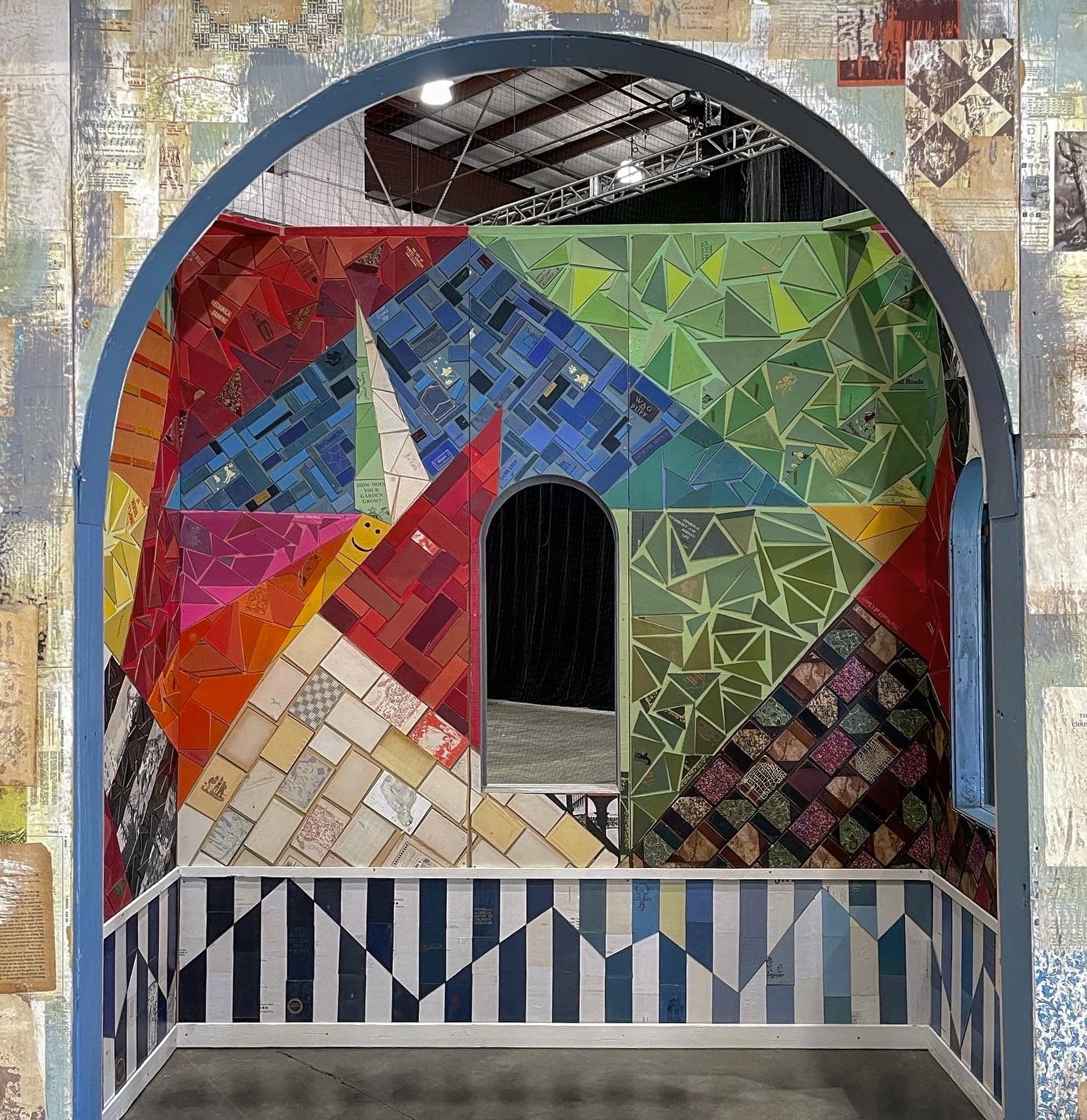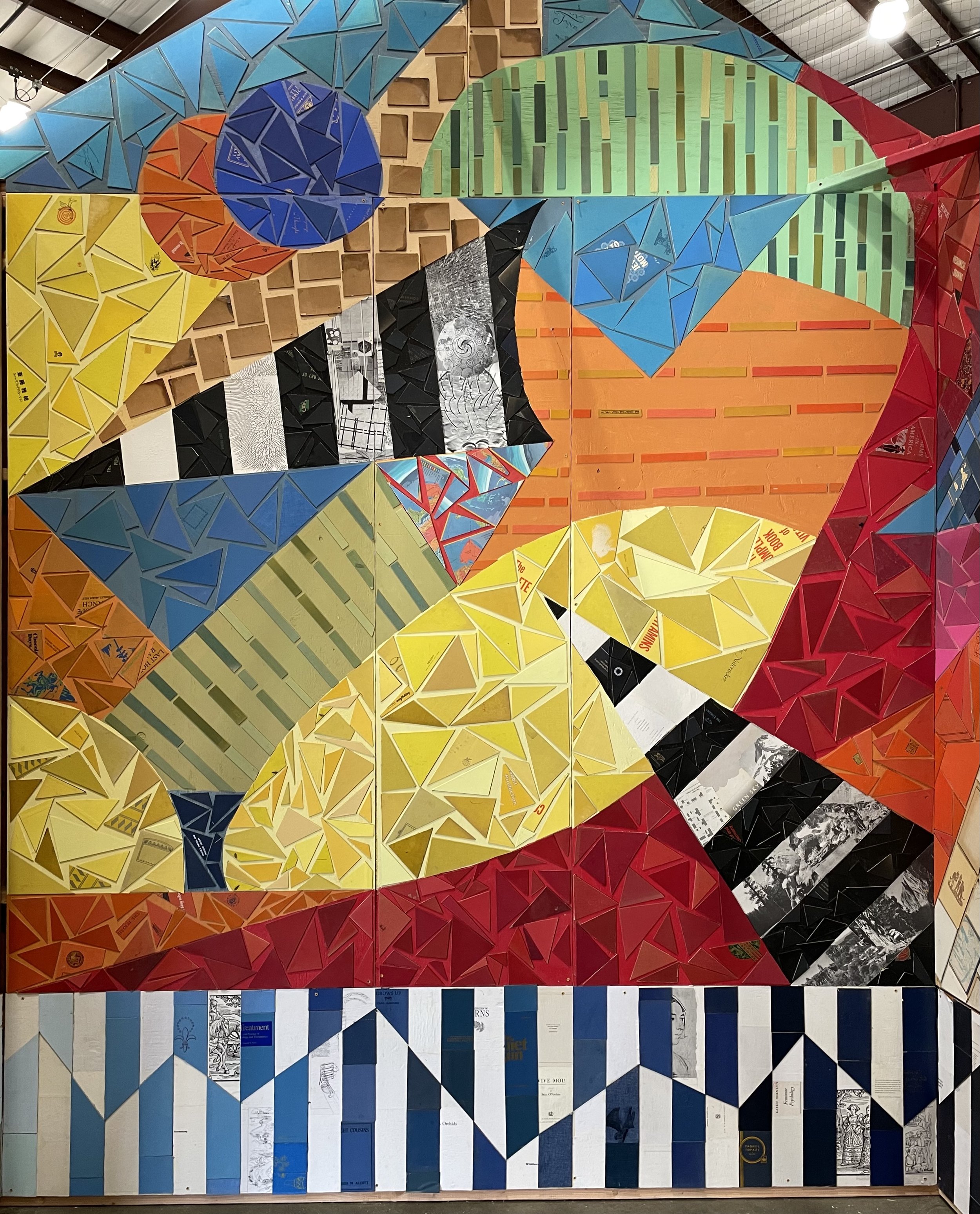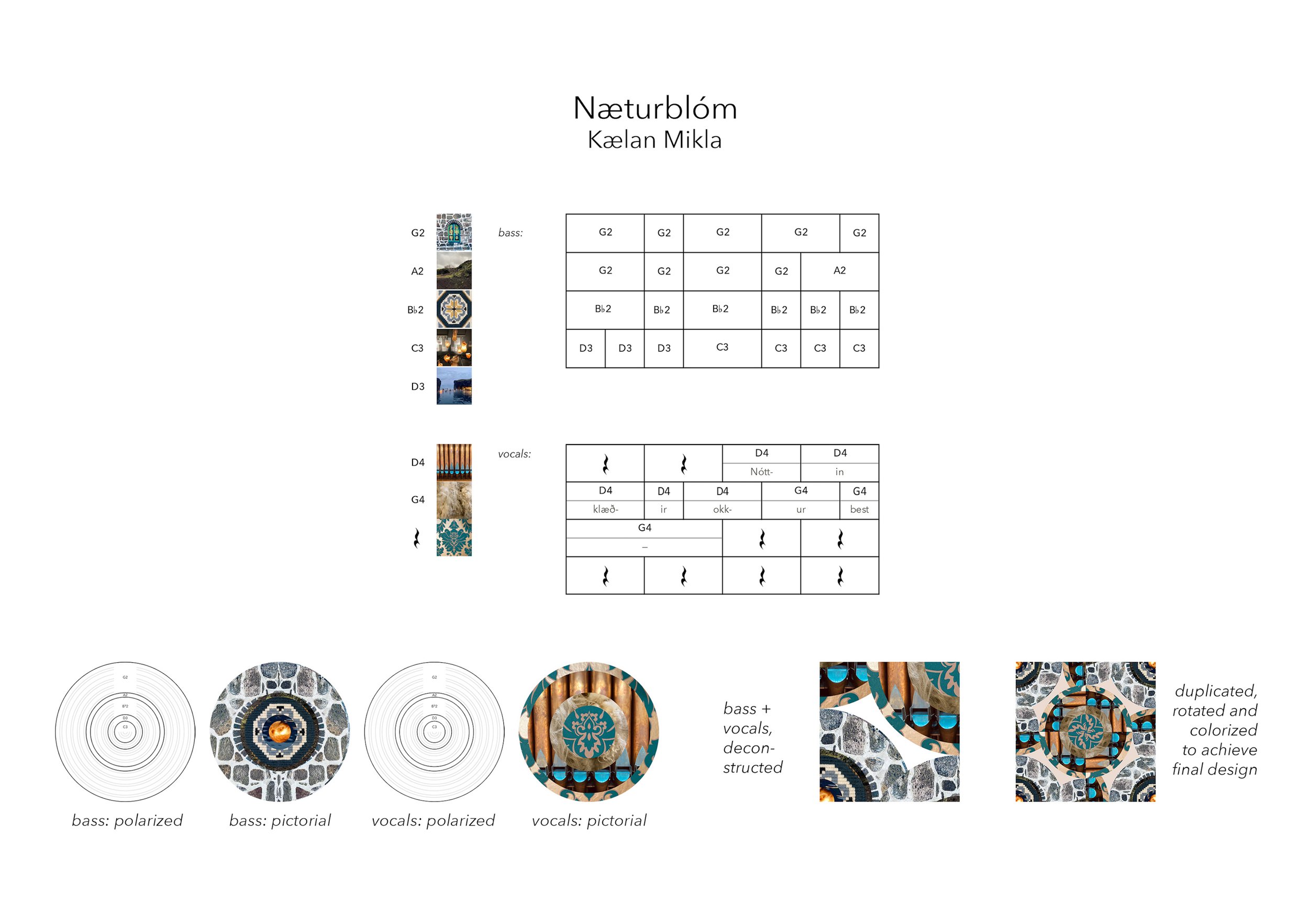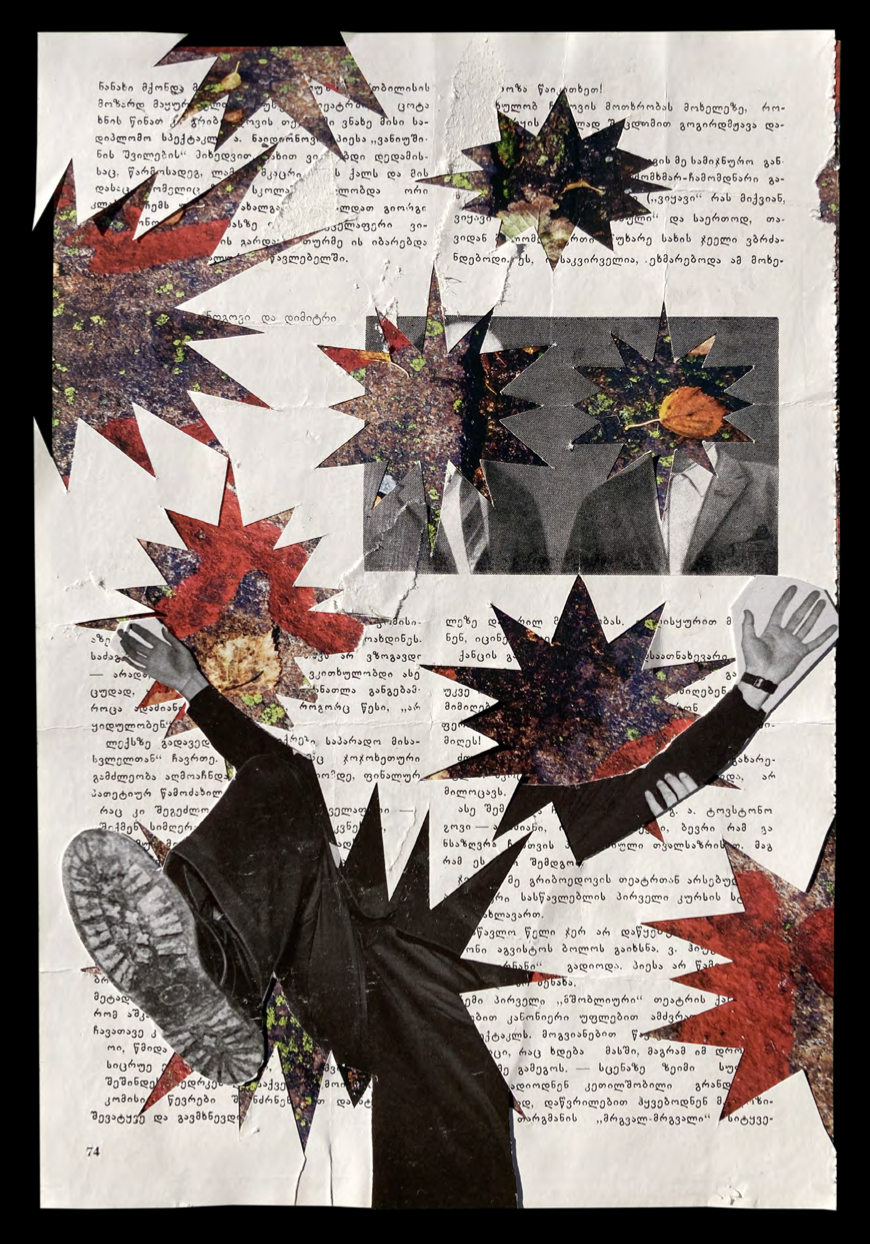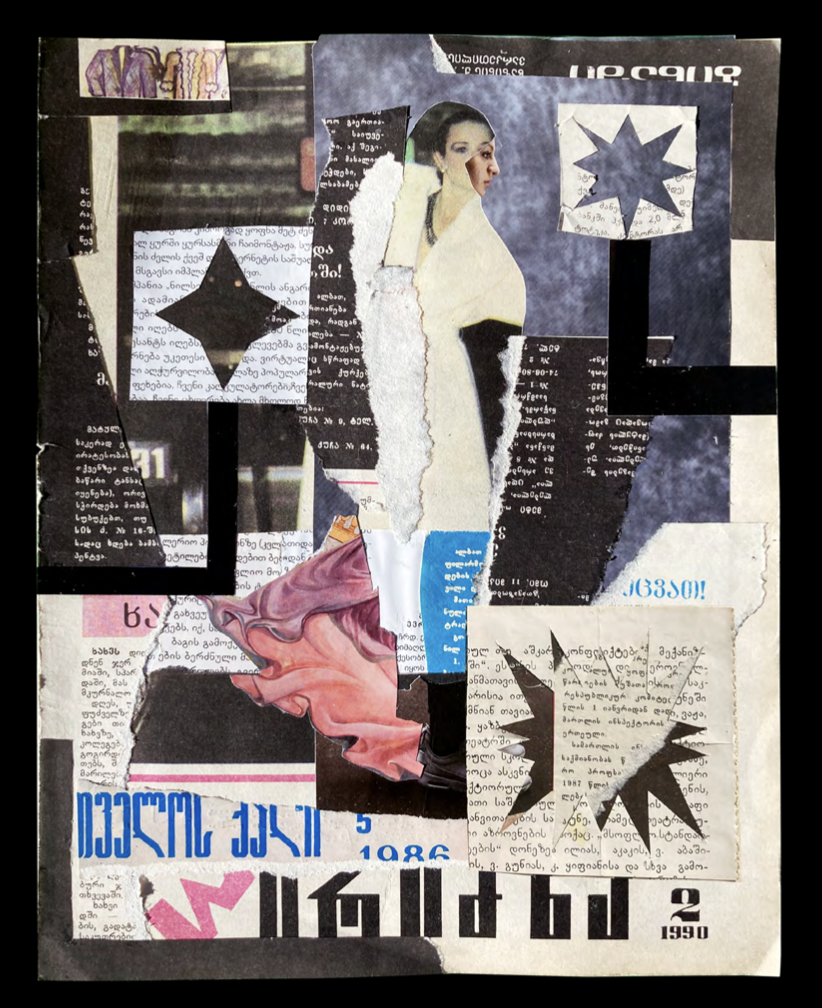
2023 Innovation Winners
Julia Nelson Gal
Unbound is a library-- a temple to human thought, altered by time, space and energy and collaged with over 3000 deconstructed books infusing the piece with a debris field of illustrations, ideas, philosophy, science and religion. This massive architectural piece is a massive collage meant to reveal the boundless potential of human thought, creativity and collaboration as well as question how time can change our understanding of what once was fact.
Philosophy
The debris field of stars --carbon, oxygen, iron and gold--are the raw materials that make up our world, both cosmologically and biologically. Unbound's materials are a combination of cosmological debris combined with the debris field of human thought. The words and illustrations in these books, decommissioned from libraries and discarded from estates, have a power in both their documentation of an individual's ideas and in their often obsolete historical perspective. Like the debris of stars, these materials have been processed through time, space and energy and reconstituted into this work of art.
Jules’ art has always paid homage to the ideas, sources, materials and people that inspire her. There is an acknowledgement that no art today comes from a vacuum; we each create based on who we are and what we experience, but also to what we see in our visually overexposed world. We want our piece to reflect the vision, craft and ideas of those makers--the writers, book binders and illustrators who came before us.
While the style and manner of this collage work is not innovative in itself, it is the size and magnitude of this piece that recognizes and honors the materials that we as collage artists utilize.
Greta Boesel
My background as a classically trained pianist and an industrial engineer informs my hallmark Cantograph series, in which I randomly assign colors, shapes and images to musical notes to create visual representations of songs. The work is partly driven by these initial correlations; variability is enhanced with the manipulation of selected attributes, but each piece retains a “map” of the song such that the correspondence between artwork and notes can be observed. I begin with no pattern in mind; consequently, the result is always a surprise—and exploring the effects of, say, doubling a note’s aspect ratio or rotating the glyphs in a chorus exemplifies the spirit of play that, for me, lies at the heart of joyful creative expression.
In 2022 I visited Iceland for the first time and was enthralled by its magic; it felt at once otherworldly and familiar (perhaps ancestrally so). I became intrigued with the idea of applying my unique art form to the music of this special island, from its versified medieval sagas to its contemporary classical compositions and the many eras between. My nascent series “Söngskissur: Icelandic Song Sketches” was conceived as a visual serenade to the country that captured my heart.
The pieces shown here, representing three songs in the contemporary ambient/atmospheric genre, are digital collages created from photographs I took during that trip and a second visit in March 2023. In each piece, individual photographs were assigned to each musical note and arranged according to the melody of the song; the resulting composite images were then layered, resized, deconstructed and colorized to achieve the final design. Also included for reference are legends showing the note/image assignments and graphic evolution of all three pieces.
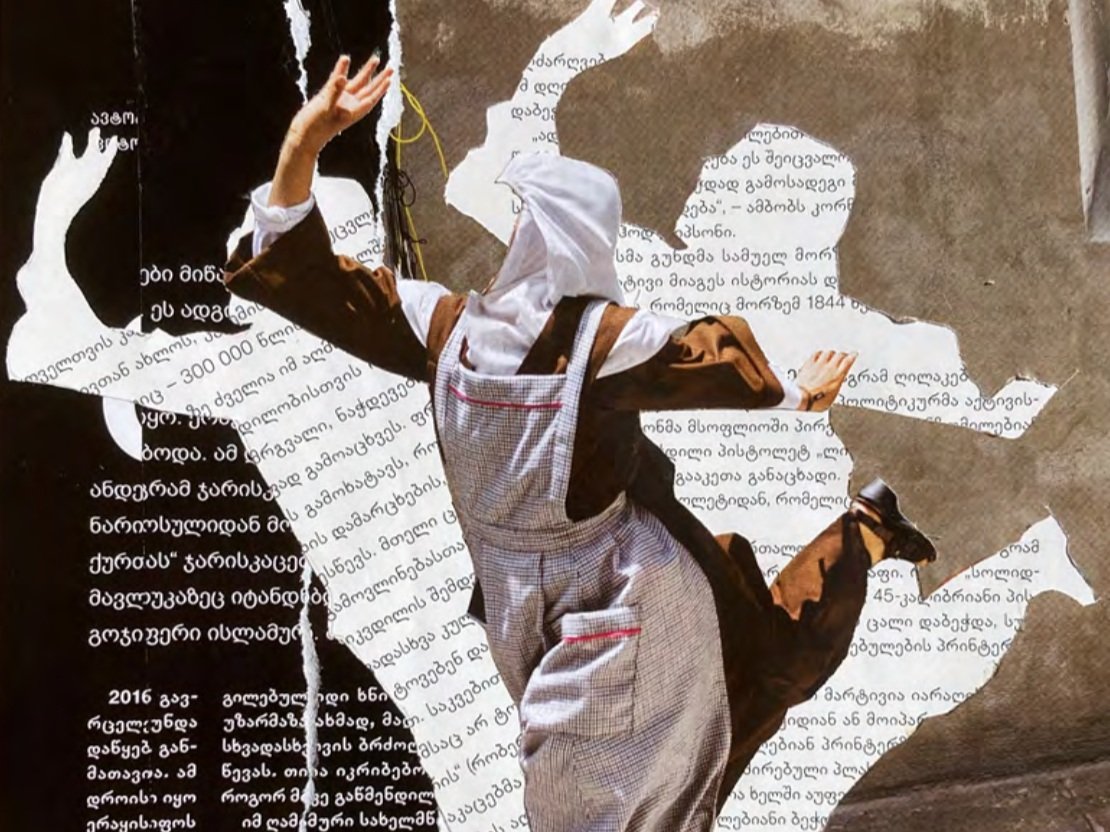
Innovation runners up
Laura Iseley
The concept of meat has always been something I’ve struggled with. My struggles originated as textural discomforts. The “crunchy thing” that was inevitably inside every McDonalds hamburger, or the chewy cartilage and veins running through an otherwise white chicken breast. It’s a sensory nightmare on top of a psychological exercise. And while I do still enjoy fish, meat is something I increasingly struggle with conceptually. And thus, this collage was born.
I initially had the concept way back in January 2023, but it has taken me many months to finally realize it. I wanted to express the idea of a “meat factory,” something that seems wrong, as meat shouldn’t be cultivated in factories. Yet the industry is very much like a sterile factory, red being the only spark of colour in such a cold complex.
Alike to Lady Gaga’s meat dress, I wanted to enclose the whole collage in meat, making it an inseparable component. And so, I endeavored to hand-make every piece of meat you see here: sculpting, pigmenting, and casting silicone over and over, much like a factory, each of my pieces of meat. I made steak, ground meat, chicken wings, cutlets, and even dead-eyed sardines. Further enclosed by Styrofoam, I wanted to call-back to the unsustainable nature of mass meat processing, hallmarked by the Styrofoam dishes meat is often bought in at the supermarket.
As a finishing touch, the swelter of summer has brought many a dead fly upon my windowsill, and so, I delicately scooped them up, preserved them in resin, and then placed them upon my meat to feast forevermore.
The result is this piece, which is by far my most labor-intensive work (and must be viewed in-person), and just the start of experimenting with much more.
Tm Gratowski
My sculptures, beyond formal aesthetics, are an attempt to push paper as a material beyond the ubiquitous flat paper paradigm. I try to create works that explore ideas of the unexpected and the idea to make 3 dimensional objects that make you look and wonder how that could be done with just using paper. This process, at first, is all trial and error as many failed attempts will lead to some kind of discovery. The biggest challenge is to get paper to do something that it is not really designed to do - defy gravity.
Mitry Grankov
It happened that I have found myself in the foreign state, in a different linguistic and cultural environment of a neighboring country, which was connected with my country by history, centuries- old and very difficult relations. I am trying to look at this culture from my point of view, to observe it, understand it, and I am fascinated by its strength and beauty.
In my work, I develop the idea of spontaneity and uncertainty, which explored Dadaists a century ago. Now as then, our reality and everyday life was torn apart by the war, and we are shocked and disappointed in the same way. The fragmentation of images and texts appears as a reaction to what is happening. The collage conveys the idea of destruction and deformation of outside world and inner world of a man in the most perfect way.
Languages have divided humanity, but they connect people as well, helping to communicate, to understand each other, to find a “common language”. Modern technologies make the process of translating languages easier, although not always clearer.
I use the cut-up method (another one from Dadaism), but in my own way - I offer online translator to search for texts in my collages and translate them into any language. The photo mode of the translator`s software creates AR by placing the translation right on the image layer, and then, when camera moves, the software offers new interpretations. So, the artwork comes to life and reveals more and more new messages to the viewer.


